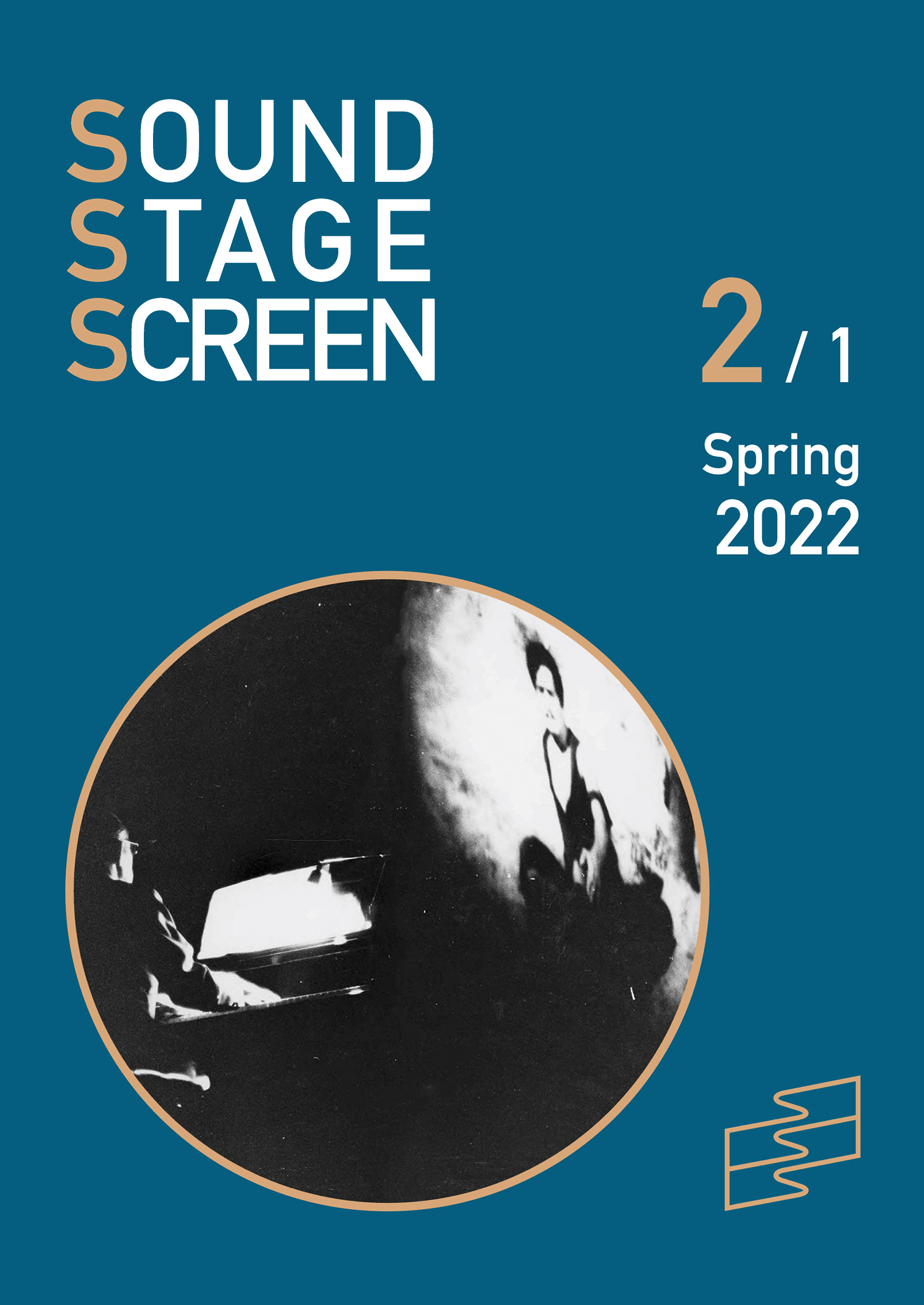Abstract
In this paper, I investigate Callas in Concert, a multimedia show that employs holographic digital and laser technology to bring the legendary diva back to the stage almost 50 years after her death. The aim of the spectacle, which bears witness to the persistence of the Callas cult to the present day, is to allow audiences to see and listen to a digitally manipulated reproduction of the dead singer’s body and voice. At the same time, Callas in Concert is a live concert, where an orchestra performs in front of an audience. My interest lies in two interrelated issues. The first concerns the question as to whether the visual or the aural dimension takes the lead in the attempt to fictionally resurrect a dead singer as a live performer. The second revolves around the paradox inherent in the use of digital technologies of reproduction and remediation to emphasize the peerless uniqueness of Maria Callas’s artistry. In bringing together these two issues, my ultimate goal is to shed light on the artistic nuances and ideological assumptions that pervade the fascination with operatic liveness today.
References
Abbate, Carolyn. “Music – Drastic or Gnostic?” Critical Inquiry 30, no. 3 (2004): 505–36.
———. Unsung Voices: Opera and Musical Narrative in the Nineteenth Century. Princeton: Princeton University Press, 1991.
Auslander, Philip. In Concert: Performing Musical Persona. Ann Arbor: University of Michigan Press, 2021
———. Liveness: Performance in a Mediatized Culture. London: Routledge, 1999.
———. “Musical Personae.” TDR/The Drama Review 50, no. 1 (2006): 100–119.
———. “‘Musical Personae’ Revisited.” In Investigating Musical Performance: Theoretical Models and Intersections, edited by Gianmario Borio, Giovanni Giuriati, Alessandro Cecchi, and Marco Lutzu, 41–55. London: Routledge, 2020.
———. “On the Concept of Persona in Performance.” Kunstlicht, vol. 36, no. 3 (2015): 63–64.
Aversano, Luca, and Jacopo Pellegrini, eds. Mille e una Callas: voci e studi. Macerata: Quodlibet, 2016.
Beghelli, Marco. “Maria Callas and the Achievement of an Operatic Vocal Subjectivity.” In The Female Voice in the Twentieth Century: Material, Symbolic and Aesthetic Dimensions, edited by Serena Facci and Michela Garda, 43–60. London: Routledge, 2021.
Biancorosso, Giorgio. “Traccia, memoria e riscrittura. Le registrazioni.” In Aversano and Pellegrini, Mille e una Callas, 293–306.
Cachopo, João Pedro. “The Aura of Opera Reproduced: Fantasies and Traps in the Age of the Cinecast.” The Opera Quarterly 34, no. 4 (2018): 266–83.
———. The Digital Pandemic: Imagination in Times of Isolation. London: Bloomsbury, 2022.
Cenciarelli, Carlo. “The Limits of Operatic Deadness: Bizet, ‘Habanera’ (Carmen), Carmen, Act I.” Cambridge Opera Journal 28, no. 2 (2016): 221–26.
Citron, Marcia J. Opera on Screen. New Haven: Yale University Press, 2000.
Clément, Catherine. Opera, or The Undoing of Women. Translated by Betsy Wing. Minneapolis: University of Minnesota Press, 1988.
Grover-Friedlander, Michal. Vocal Apparitions: The Attraction of Cinema to Opera. Princeton: Princeton University Press, 2005.
Henson, Karen, ed. Technology and the Diva: Sopranos, Opera, and Media from Romanticism to the Digital Age. Cambridge: Cambridge University Press, 2016.
Huyssen, Andreas. After the Great Divide: Modernism, Mass Culture, Postmodernism. Bloomington: Indiana University Press, 1986.
Kant, Immanuel. Critique of Judgment. Translated by James Creed Meredith. Revised, edited, and introduced by Nicholas Walker. Oxford: Oxford University Press, 2007.
Kluge, Alexander. Temple of the Scapegoat: Opera Stories. Translated by Isabel Fargo Cole, Donna Stonecipher, and others. New York: New Directions Books, 2018.
Morris, Christopher, and Joseph Attard, eds. “Opera at the Multiplex.” The Opera Quarterly 34, no. 4 (2018).
Novak, Jelena. “The Curatorial Turn and Opera: On the Singing Deaths of Maria Callas. A Conversation with Marina Abramović and Marko Nikodijević.” Sound Stage Screen 1, no. 2. (2021): 195–209.
Salazar, David. “Bringing Maria Callas Back to Life.” Opera Wire, June 16, 2018. https://operawire.com/bringing-maria-callas-back-to-life-the-team-behind-callas-in-concert-on-creating-a-hologram-of-la-divina/.
Scherzinger, Martin. “Event or Ephemeron? Music’s Sound, Performance, and Media (A Critical Reflection on the Thought of Carolyn Abbate).” Sound Stage Screen 1, no. 1 (2021): 145–92.
Seletsky, Robert E. “The Performance Practice of Maria Callas: Interpretation and Instinct.” The Opera Quarterly 20, no. 4 (2004): 587–602.
Stanyek, Jason, and Benjamin Piekut. “Deadness: Technologies of the Intermundane.” TDR: The Drama Review 54, no. 1 (2010): 14–38.
Steichen, James. “The Metropolitan Opera Goes Public: Peter Gelb and the Institutional Dramaturgy of The Met: Live in HD.” Music and the Moving Image 2, no. 2 (2009): 24–30.
Stevens, Nicholas, ed. “Review Colloquy: 7 Deaths of Maria Callas, Live stream from the Bayerische Staatsoper, Munich, September 2020.” The Opera Quarterly 36, no. 1-2 (2020): 74–98.

This work is licensed under a Creative Commons Attribution 4.0 International License.
Copyright (c) 2022 João Pedro Cachopo

